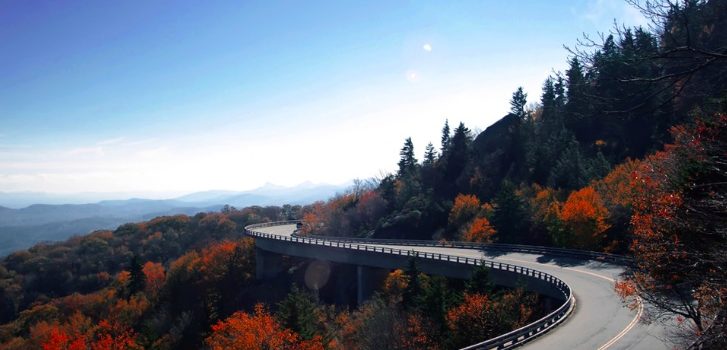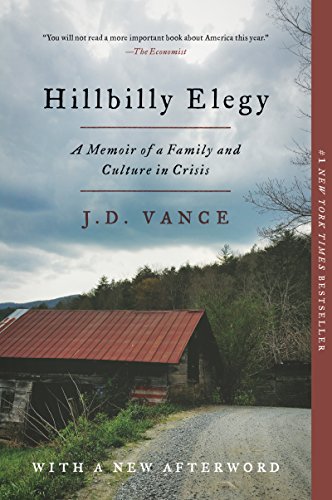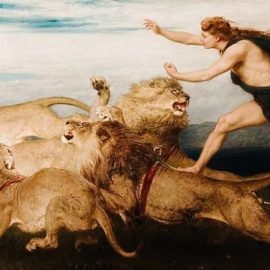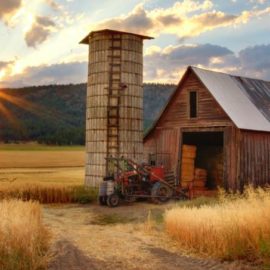

This article is an excerpt from the Shortform summary of "Hillbilly Elegy" by JD Vance. Shortform has the world's best summaries of books you should be reading.
Like this article? Sign up for a free trial here .
What are the most common Appalachian stereotypes? Are they accurate?
Hillbilly Elegy sets out to explore the struggles of the rural white working class in 21st-century America through the personal story of its author, JD Vance. Part autobiography, part sociological text, and part political manifesto, the book tells a story of dysfunctional families; substance abuse; the material, spiritual, and moral decline of Appalachia; and the struggles to achieve true economic and social mobility in the United States. Ultimately, JD overcomes the odds and achieves a life of success and respectability outside of the hillbilly culture from which he came—but at a heavy personal cost, and with many struggles along the way. We’ll cover the ways Vance suggests that many Appalachian stereotypes are accurate.
Common Appalachian Stereotypes
Vance’s Mamaw and Papaw were part of a mass exodus of young Appalachian families seeking opportunities in the fast-growing and rapidly industrializing Midwest. The influx of people from Kentucky into the Midwest sprouted the growth of Appalachian stereotypes there.
Companies like Armco, where Papaw found employment, actively recruited workers from the eastern Kentucky coal country where Vance’s family had its roots. These companies often encouraged and paid for men to bring their whole families with them, effectively transplanting entire communities.
The wave of migration was so common that stretches of U.S. Route 23 and Interstate 75 became colloquially known as the “Hillbilly Highway.” The numbers of people on the move were immense: by the 1950s, 13 percent of Kentucky residents had left the state.
Culture Clash and Appalachian Stereotypes
As with any wave of migration, the hillbilly migrants brought their own culture and set of traditions to their new homes in the industrialized Midwest. Appalachian transplants established their own communities in these industrial towns and cities, often to the alarm of the more established middle class Ohioans. The middle class had plenty of examples to support their Appalachian stereotypes.
The migrants from Kentucky seemed to be people from an entirely different world. For the more bourgeois Midwesterners, the hillbillies were alien and destructive to community values:
They had too many children; they brought their extended families into their homes for visits that lasted too long, upsetting the peace, quiet, and normalcy of the community; and they were coarse, profane, and prone to violence.
Are Appalachian Stereotypes True? The Toy Store Brawl
In one illustrative example, Vance recounts a story that subsequently became family legend. His grandparents were in a department store in Middletown with their son when the boy started to play with one of the toys on display.
When the clerk asked the boy to put the toy down and leave the store, Papaw and Mamaw went berserk: smashing the merchandise and physically threatening the clerk, saying “If you say another word to my son, I will break your fucking neck.”
This display of violent anger and utter disregard for social norms was shocking to the Ohioans who witnessed the scene, but it was a matter of basic pride for Vance’s family. The parents were merely defending his son against a stranger who had slighted the family’s honor by telling him where he could and couldn’t go. This was just what any self-respecting hillbilly would do when an outsider messed with their child.
Shortform note: This scene of violence and anger in response to a relatively mild slight may have its roots in what historians and sociologists have called the “Southern culture of honor.” It’s characterized by an extreme unwillingness to tolerate personal insults of any kind and a high propensity, particularly on the part of males, to defend one’s reputation with violence.
“You Can’t Take Kentucky Out Of The Boy”
Interestingly, Vance observes that the Ohioans seemed to view the transplanted hillbilly community as being almost racially different, despite the migrants being just as white as their neighbors.
To the Ohioans, the hillbillies shared many behavioral and cultural characteristics with the black migrants who came up from the South to settle in Detroit, Chicago, St. Louis, Cincinnati, and other industrial Midwestern cities during the great black migrations of the postwar era.
This experience shows that culture is not stationary: your values and upbringing will follow you wherever you go. This was certainly true for the transplanted Kentuckians: they didn’t leave their way of life behind when they left their native communities, they simply brought them to a new location.
Mamaw summed it up pithily by saying, “you can take the boy out of Kentucky, but you can’t take Kentucky out of the boy.”
Appalachian Stereotype #1: They Deemphasize Education
Looking back, JD sees how little his community and culture emphasized education.
Growing up in Middletown, a college education was a distant and remote pipe-dream, certainly not something parents prepared their children for or treated as an expected life experience.
What JD now knows is that all across other regions of the country, parents were setting their children up to attend college and start white-collar careers. Tutors, SAT prep courses, guidance counselors, and all the other tools of the college-acceptance game were simply unknown to the children of his community. They weren’t losing this competition—they just weren’t playing the game at all. No one that JD knew at this time, for example, had gone to a four-year college.
Once again, the statistics paint a damning picture: 20 percent of the town’s high school freshman cohort won’t graduate in four years. Of those that do graduate, most won’t go on to college, and those that manage to make it to college almost certainly won’t go out-of-state.
As an adult, JD attributes this poor record of educational attainment to a culture of low expectations. Children see poverty, high unemployment, and drug addiction all around them growing up, often in their own immediate families. They have poor models of adult behavior, so they don’t come to expect much from themselves. He certainly saw this in his own life: even when he got poor grades, there was never any sense that there would be negative consequences for failing to achieve academically.
Appalachian Stereotype #2: They’re “Hard Working” Welfare Cheats
Beyond the raw economic misfortunes of the town, JD began to notice that hard work and initiative were almost entirely absent in many of the adults around him. Despite this, people made a point of playing lip-service to these ideals, even when they seldom lived up to them in practice.
He recalls one woman who was always hounding Mamaw, either to borrow her car or sell her food stamps to Mamaw for cash. Despite this woman’s lifestyle of welfare dependency, her eagerness to defraud the social safety net, and the fact that she’d never worked a day in her life, she viewed herself as a model of industriousness. Indeed, she saw herself as a worthy recipient of government help, while it was those “other” lazy moochers who were gaming the system and making it hard for decent, honest people to get by.
There was simply an absence of work and an acceptance of unemployment or underemployment as a way of life. 30 percent of young men in Middletown work under 20 hours per week.
Appalachian Stereotype #3: They Experience Cognitive Dissonance
JD now sees the lies and blame-shifting as ways of coping with massive cognitive dissonance: the gap between the community’s professed values and the actual lived reality of their lives. There must be some oppressive, outside force at work if so many self-described hardworking and industrious people are mired in poverty and social dysfunction. Believing in a nefarious conspiracy that’s keeping you down is far more comforting than confronting the true scale of the devastation in your life. There’s massive power in delusion.
Appalachian Stereotype #4: They Have Destructive Values
The deindustrialization of Appalachia has led to a serious lack of opportunity for people entering their prime working years. People can’t work when there are no jobs to be had: the Armcos of the world aren’t going to provide employment for all the young men to support a family the way they could have a generation ago.
But based on his own experiences, JD now believes that today’s hillbillies have responded to the economic crisis in their communities the wrong way: by building a set of values that justifies and even celebrates the avoidance of work, while blaming nefarious outside forces for their problems.
———End of Preview———

Like what you just read? Read the rest of the world's best summary of "Hillbilly Elegy" at Shortform . Learn the book's critical concepts in 20 minutes or less .
Here's what you'll find in our full Hillbilly Elegy summary :
- The hallmarks of hillbilly culture and why they hold people back
- How JD Vance broke out of his hillbilly childhood and graduated from Yale
- Why the author thinks hillbillies might be beyond saving






